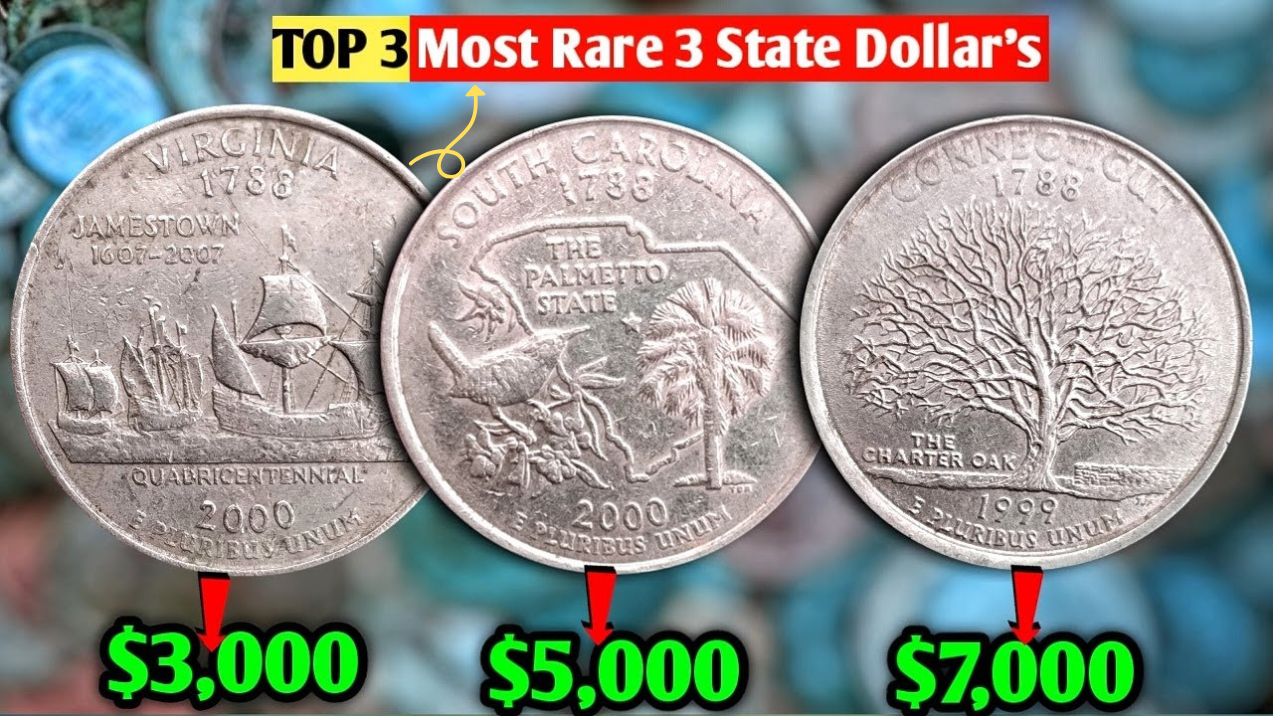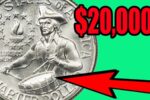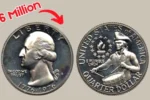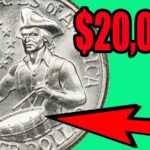This Rare Bicentennial Quarter Is Valued at $677,777 – Still in Circulation!
Have you ever wondered if the change in your pocket could be worth a fortune? Most of us don’t look twice at coins we use daily, especially something as common as a quarter. But believe it or not, there’s one specific quarter—yes, just a regular-looking 25-cent coin—that’s now worth a shocking $677,777. Even more surprising? It might still be out there, quietly circulating through the hands of everyday people like you and me.
This incredible coin is a Bicentennial Quarter, originally made to celebrate 200 years of American independence. While millions were minted, only a few rare versions carry such high value. This article will help you understand why this quarter is so special, how to spot one, and why collectors are willing to pay such a high price.
Overview Table: Key Facts About the Rare Bicentennial Quarter
| Feature | Details |
|---|---|
| Coin Name | Bicentennial Quarter |
| Year Minted | 1976 |
| Face Value | $0.25 |
| Estimated Value (Rare Type) | $677,777 |
| Material | 40% Silver (for rare versions) |
| Still in Circulation? | Yes |
| Special Design | Colonial drummer on reverse side |
| Mint Marks to Watch | “S” for San Francisco, others |
Why Is This Quarter So Valuable?
The U.S. Mint released the Bicentennial quarters in 1975 and 1976 to honor 200 years of American independence. These quarters are different from the regular ones because they feature a unique reverse design with a Colonial drummer and a torch surrounded by 13 stars. But here’s the catch—not all Bicentennial quarters are valuable. In fact, most are still only worth 25 cents.
So, what makes this one worth hundreds of thousands of dollars?
It’s all about rarity, condition, and minting errors.
Some of these quarters were minted with a special 40% silver content, while others may have minting mistakes like double dies or misstruck patterns. When these features are combined with perfect condition (graded MS-67 or higher), the value can skyrocket. One of these rare pieces has been valued and sold for $677,777 due to its flawless condition and silver composition.
What to Look for in Your Pocket Change
It’s exciting to think this valuable quarter might be hiding in your coin jar. But before you go digging, here’s what to check for:
-
Date & Design: Look for the dual date 1776-1976 on the front.
-
Reverse Design: There should be a Colonial drummer instead of the regular eagle.
-
Mint Mark: Quarters with an “S” mint mark (San Francisco Mint) and made of 40% silver are more valuable. Some without a mint mark may still be rare if they contain errors.
-
Condition: If the coin has sharp details, no scratches, and a shiny surface, it might be in “mint state.”
-
Weight: Silver quarters weigh slightly more—check if you have a coin scale.
If you think you’ve found one, don’t rush to spend it. Get it checked by a coin grading service or a local coin dealer.
The Story Behind the Bicentennial Quarter
Back in the mid-1970s, the U.S. Mint wanted to do something special to celebrate 200 years since the signing of the Declaration of Independence. So, instead of releasing new designs each year, they created special designs for the quarter, half dollar, and dollar coins—all featuring “1776-1976” as the date.
The Bicentennial Quarter was one of the most popular of the bunch. The reverse, designed by Jack L. Ahr, features a Colonial drummer with a torch and stars. Millions were made, and many people kept them as souvenirs. But because so many were saved, only the rare versions are worth big money now.
Most were made from regular copper-nickel, but a few special ones were made in silver for collectors. These were included in proof and mint sets, which some people opened and spent by mistake. That’s why they can still turn up in everyday circulation.
Why Coin Collectors Go Crazy for This Quarter
Coin collecting isn’t just a hobby—it’s big business. The rarer the coin, the more collectors will pay for it. A coin like this Bicentennial Quarter has several qualities that make it desirable:
-
Historical Significance: It celebrates an important milestone in American history.
-
Limited Mintage of Silver Versions: Fewer were made, especially in silver.
-
High-Grade Condition: Coins that are nearly perfect fetch the highest prices.
-
Mint Errors: Any mistake during production can increase a coin’s value dramatically.
Collectors are constantly looking for that one rare find that sets their collection apart, and this quarter fits the bill.
Attention Please: Could You Really Have One?
It sounds almost too good to be true. A quarter worth nearly $700,000, possibly sitting in your change drawer? But it’s happened before. Coins have shown up in garage sales, old jars, even in vending machine change.
That’s the mystery and magic of coin collecting—you never know what treasure might turn up.
Frequently Asked Questions (FAQs)
1. How can I tell if I have a silver Bicentennial Quarter?
Check for an “S” mint mark and see if the coin looks shinier or feels heavier. Silver quarters also sound different when dropped compared to regular ones.
2. Are all Bicentennial Quarters valuable?
No. Most are only worth face value unless they have silver content, are in perfect condition, or have minting errors.
3. Where can I get my coin checked?
You can visit a professional coin dealer or send it to a coin grading company like PCGS or NGC for certification.
4. Why is the $677,777 value so high?
That specific quarter had a rare combination of silver content, perfect condition (graded MS-67+), and a mint error, making it extremely rare and valuable to collectors.
5. Should I keep my Bicentennial Quarters?
Yes! Even if they’re not worth much now, their historical value makes them great collectibles. And you never know when you might find a rare one.
Final Thoughts
The idea that a simple quarter could be worth more than a luxury car seems impossible—but it’s real. This rare Bicentennial Quarter, valued at $677,777, shows us that everyday objects can carry hidden value. So next time you get change, take a closer look. You might be holding a small piece of history—and possibly a big treasure.













